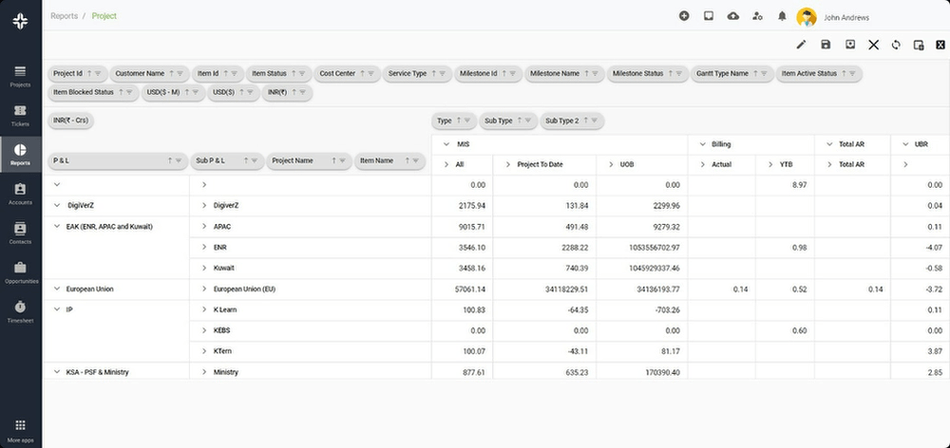Home » PSApedia
Project customer satisfaction score
Elevate Your Project Success and Track Customer Satisfaction Scores.

What is to Project Customer Satisfaction Score?
In today’s competitive business landscape, the Project Customer Satisfaction Score (PCSS) has emerged as a vital benchmark for assessing the success of professional services. It is a direct reflection of a client’s perception of the value delivered through a project. This score is not merely a feedback tool but a strategic asset that can shape the future direction of service delivery.
Understanding PCSS is essential for businesses that aim to excel in customer-centricity. It goes beyond traditional metrics by capturing the nuances of client satisfaction on a project-by-project basis.
The Importance of Project Customer Satisfaction Score
The significance of PCSS in professional services cannot be overstated. It is a direct indicator of client contentment and loyalty, which are crucial for the sustained growth and profitability of a service-oriented business. A high PCSS often correlates with repeat business, referrals, and an enhanced reputation in the market. Why does PCSS matter so much? The answer lies in its impact on business outcomes. A high PCSS is indicative of a job well done, leading to a host of benefits including:
1. Customer Retention: Satisfied customers are more likely to stay loyal to your service.
2. Upselling Opportunities: Satisfied customers are more receptive to purchasing additional services.
3. Competitive Differentiation: In a market where products are often similar, service quality, as reflected by PCSS, can set you apart.

The Importance of Project Customer Satisfaction Score
Calculating PCSS
Calculating the PCSS involves gathering client feedback post-project completion. The score is typically measured on a scale, for instance, 1-10, where 10 signifies utmost satisfaction. The formula for PCSS could be as simple as the average of all individual scores, or more complex, incorporating weights for different aspects of the service.
Example:
If a project receives the following individual satisfaction scores: 8, 9, 7, 10, and 8, the PCSS would be the sum of these scores divided by the number of responses:
PCSS = (8+9+7+10+8) / 5 = 8.4
PCSS vs Other Customer Satisfaction Metrics
While PCSS is a critical metric, it’s important to differentiate it from other customer satisfaction metrics such as Net Promoter Score (NPS) or Customer Effort Score (CES). Unlike NPS, which measures the likelihood of a customer recommending a service, PCSS focuses on satisfaction with a specific project. CES, on the other hand, gauges the ease of service experience. While PCSS is an invaluable tool, it’s important to understand how it differs from other metrics:
1. Net Promoter Score (NPS): Measures the likelihood of a customer recommending your service, not specific to any project.
2. Customer Effort Score (CES): Evaluates how easy it is for customers to get their issues resolved.
3. Customer Satisfaction (CSAT): Typically a broader measure of customer feelings towards a company’s products or services.
Each of these metrics can provide insights into different aspects of the customer experience, but PCSS is unique in its focus on individual project outcomes.
| Metric | Description | Purpose | Pros | Cons |
|---|---|---|---|---|
| CSAT (Customer Satisfaction Score) | A metric that measures customer satisfaction with a product or service based on a survey. | Assessing how satisfied customers are with the project or deliverables. | Provides direct feedback from customers. | May not capture all aspects of project success. |
| Net Promoter Score (NPS) | Measures the likelihood of customers recommending a product or service to others. | Indicates the project’s impact on customer loyalty and advocacy. | Focuses on customer loyalty and advocacy. | Doesn’t provide detailed insights into specific issues. |
| Project Timeline Adherence | Compares the actual project timeline with the initially planned timeline. | Assesses the project’s ability to meet deadlines and milestones. | Offers a clear view of time management. | Doesn’t consider the quality of deliverables. |
Application of PCSS in Business
PCSS is used to make informed decisions about service improvements, employee performance, and customer relationship management. It can influence strategic planning and operational adjustments, ensuring that the services provided align with customer expectations. The application of PCSS in business is multifaceted. It can be used to:
1. Improve Service Delivery: By understanding where a project met or fell short of expectations, service delivery can be refined.
2. Enhance Customer Communication: PCSS can identify areas where communication may have been lacking, providing opportunities for improvement.
3. Inform Strategic Decisions: High or low PCSS can influence the types of projects a company may choose to pursue in the future.
Ready to Optimize Your PCSS?
KEBS PSA software offers a suite of tools designed to enhance project delivery and, consequently, the PCSS. From project management to resource allocation, KEBS streamlines operations to ensure customer satisfaction is at the forefront of service delivery. KEBS PSA software is a powerful ally in optimizing PCSS. It offers features that touch every aspect of project delivery, including:
Helps in visualizing project timelines and deliverables, ensuring that client expectations are met. Ensures that the right resources are allocated to the right projects for optimal outcomes. Tracks billable hours accurately, contributing to transparent billing and customer satisfaction. Provides real-time insights into project profitability, helping in making informed decisions that can enhance PCSS.

KEBS Project Management
Ready to elevate your PCSS and transform your client satisfaction levels? Contact us for a personalized demo of KEBS PSA software and discover how it can revolutionize your project delivery.



